RESILIENCE METRICS FOR NATURAL RESOURCES
Resilience Benefits of Natural Resources
Natural resources also help us adapt to the effects of climate change and boost our climate resilience by absorbing floodwater, reducing storm-related erosion, and reducing urban heat island effects.
For example, Fairfax County’s existing trees are estimated to intercept 7.3 billion gallons of rainfall per year, helping us to avoid 945 million gallons of stormwater runoff, and saving us $8.4 million in stormwater mitigation, according to iTree. Trees also greatly reduce the Urban Heat Island effect, keeping our communities cooler during extreme heat. Similarly, healthy wetlands and living shorelines help to absorb storm surge and other types of flooding.
The Resilient Fairfax Plan includes several strategies to protect and restore natural resources for climate resilience purposes. These strategies include protection of sensitive land, tree plantings and reforestation, green infrastructure, living shorelines, wetland and floodplain restorations, stream restoration, regenerative agriculture, and more.
Tree Planting in Urban Heat Islands
The figure below shows Fairfax County Government, Public Schools, and Parks sites where trees were planted in 2023 and 2024. Each tree icon on this map represents one site. Each site received multiple tree plantings. For example, 46 trees were planted at Lincolnia Senior Center. The tree planting sites are overlaid on a map of Urban Heat Islands in the county. The Urban Heat Island base layer is based on NASA satellite temperature measurements from the hottest month of the year (June, July, August) averaged over multiple years (2013-2020). Temperatures are land surface temperatures, which are not equivalent to air temperatures. Planting trees helps reduce the Urban Heat Island effect, so UHIs are one consideration for tree planting locations.
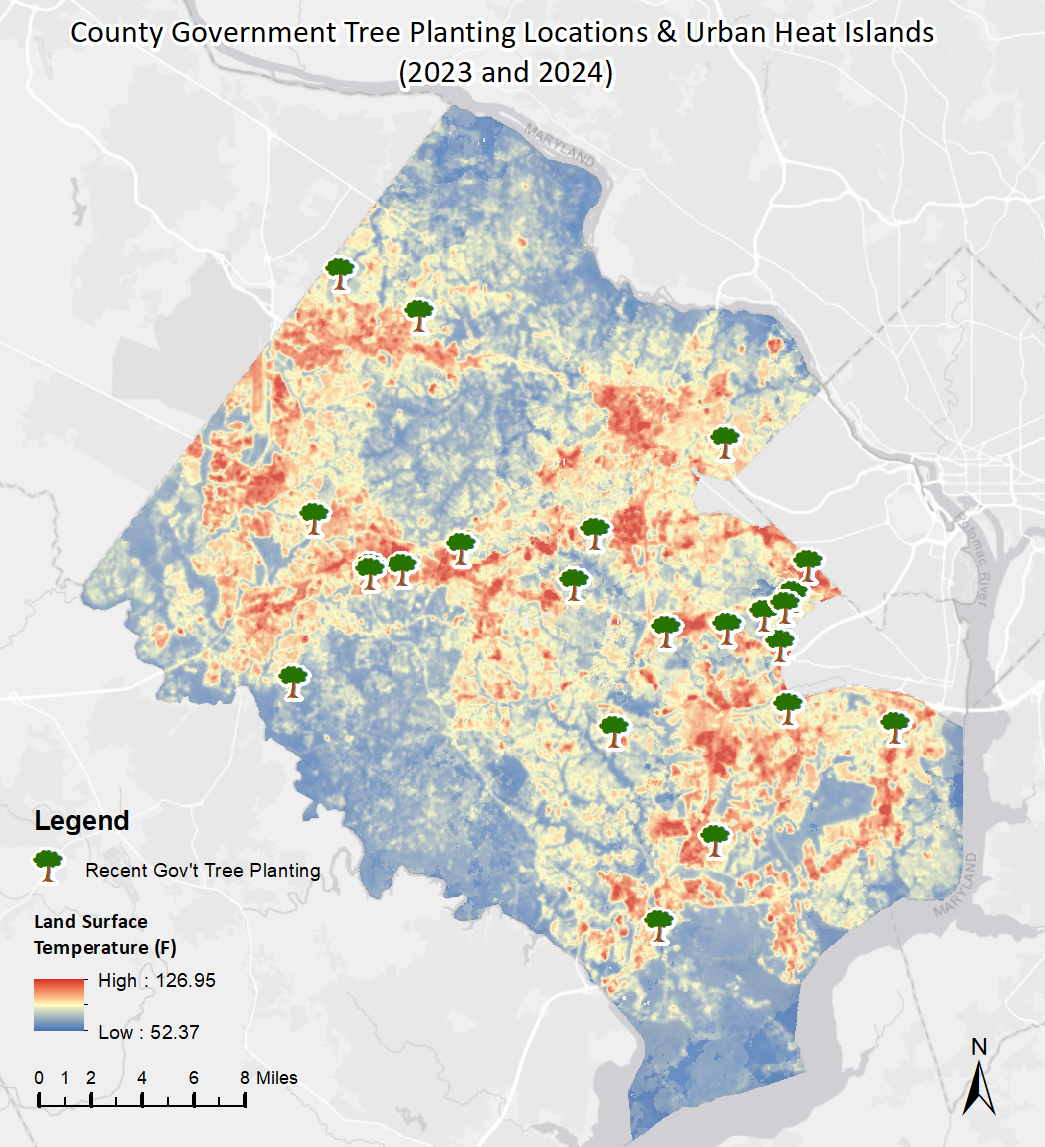
Vulnerabilities of Natural Resources
To get these benefits from our natural resources, they need to be protected and made more resilient. Natural resources are themselves vulnerable to the effects of climate change. They are often severely damaged or weakened by severe storms, heat waves, and flooding.
A summary of these vulnerabilities to natural resources can be found in the table below. These vulnerability scores are based on a combination of exposure (how exposed is the resource to the hazard, and is the hazard increasing or decreasing?), sensitivity (is the resource damaged by the hazard?), and adaptive capacity (can the resource adapt to this hazard?). For a detailed description of vulnerabilities, please see the Climate Vulnerability and Risk Assessment. An interactive map of these natural resources and certain climate hazards can be found in the Resilient Fairfax Interactive Map Viewer.
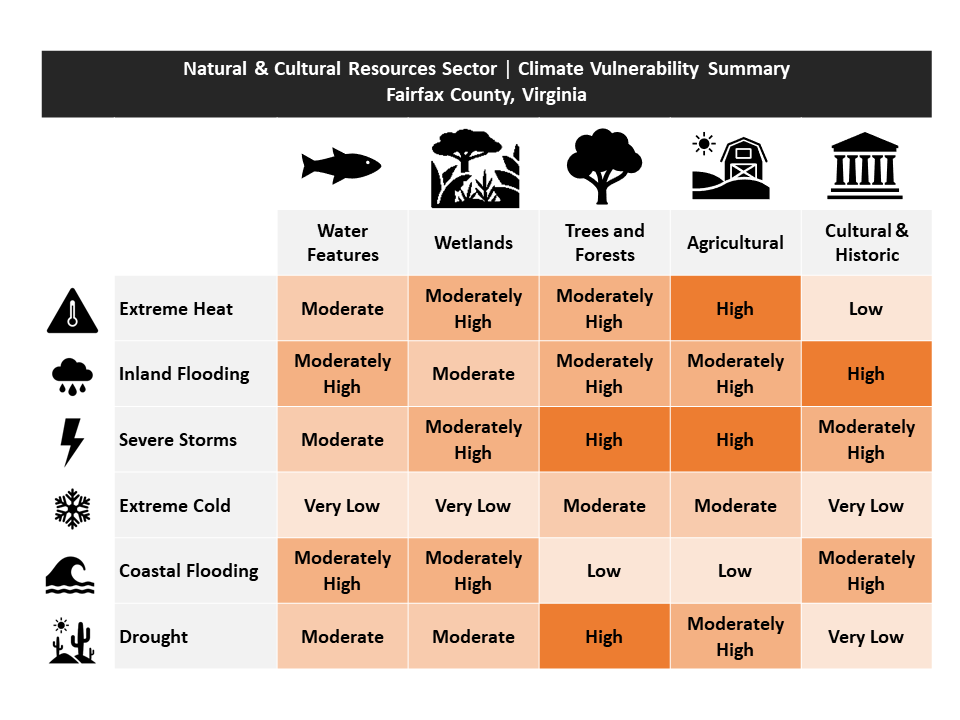
Tree Losses During Storms
Downed trees are the most common reason for weather-related road closures in Fairfax County, according to VDOT data from 2019-2023. Downed trees caused even more road closures than vehicular accidents. The chart and map below show all weather-related road closures for that four-year period. In the map, downed trees are shown with the green tree symbol. There were 917 road closures due to downed trees between July 2019 and November 2023, and an additional 9 road closures due to tree removals. For comparison, there were 646 road closures due to vehicular accidents and fires and 57 road closures due to downed power lines in the same time period. Improving the resilience of our trees can help from both environmental and safety perspectives. To help address this issue, the county is working on a Resilient Trees initiative. For more information, please email ResilientFairfax@fairfaxcounty.gov.
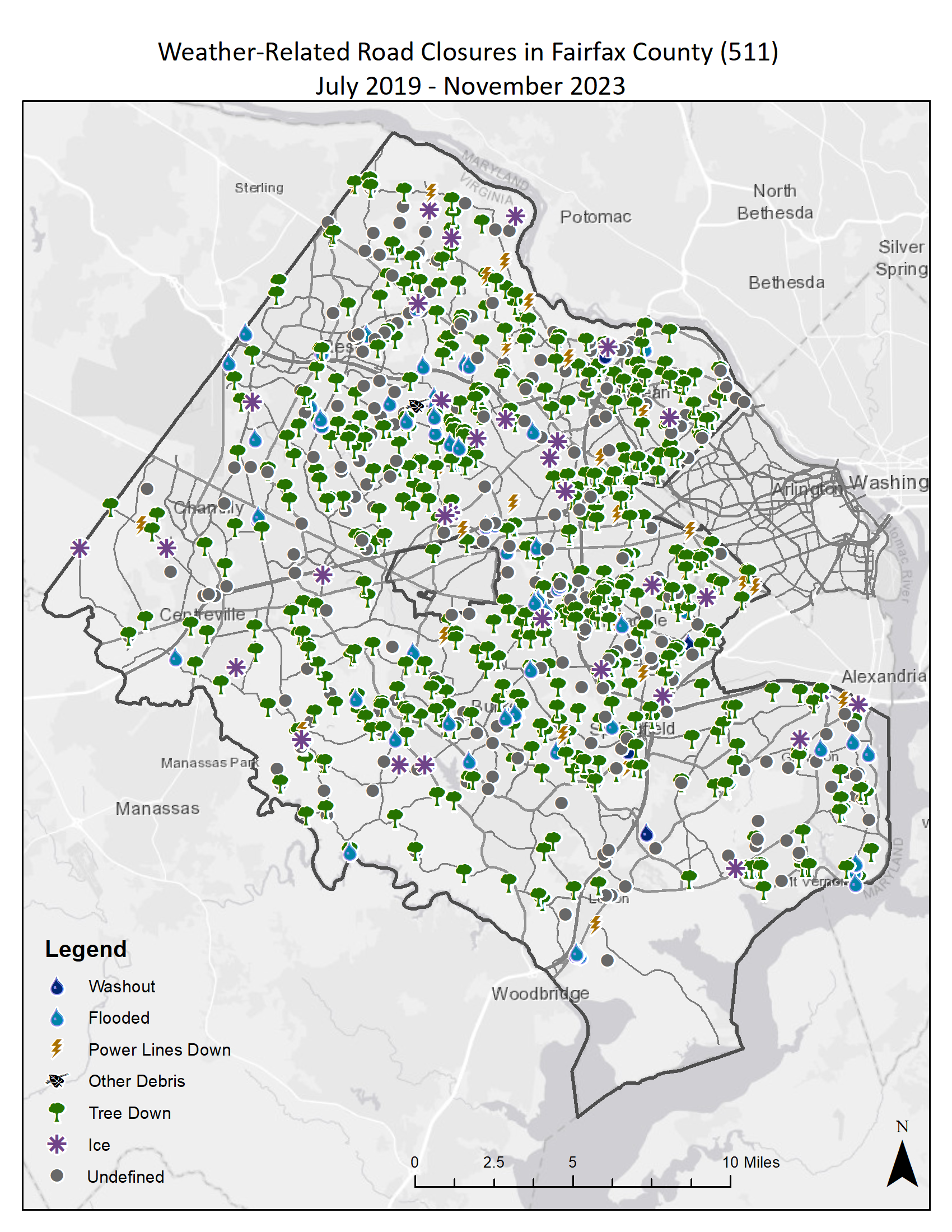
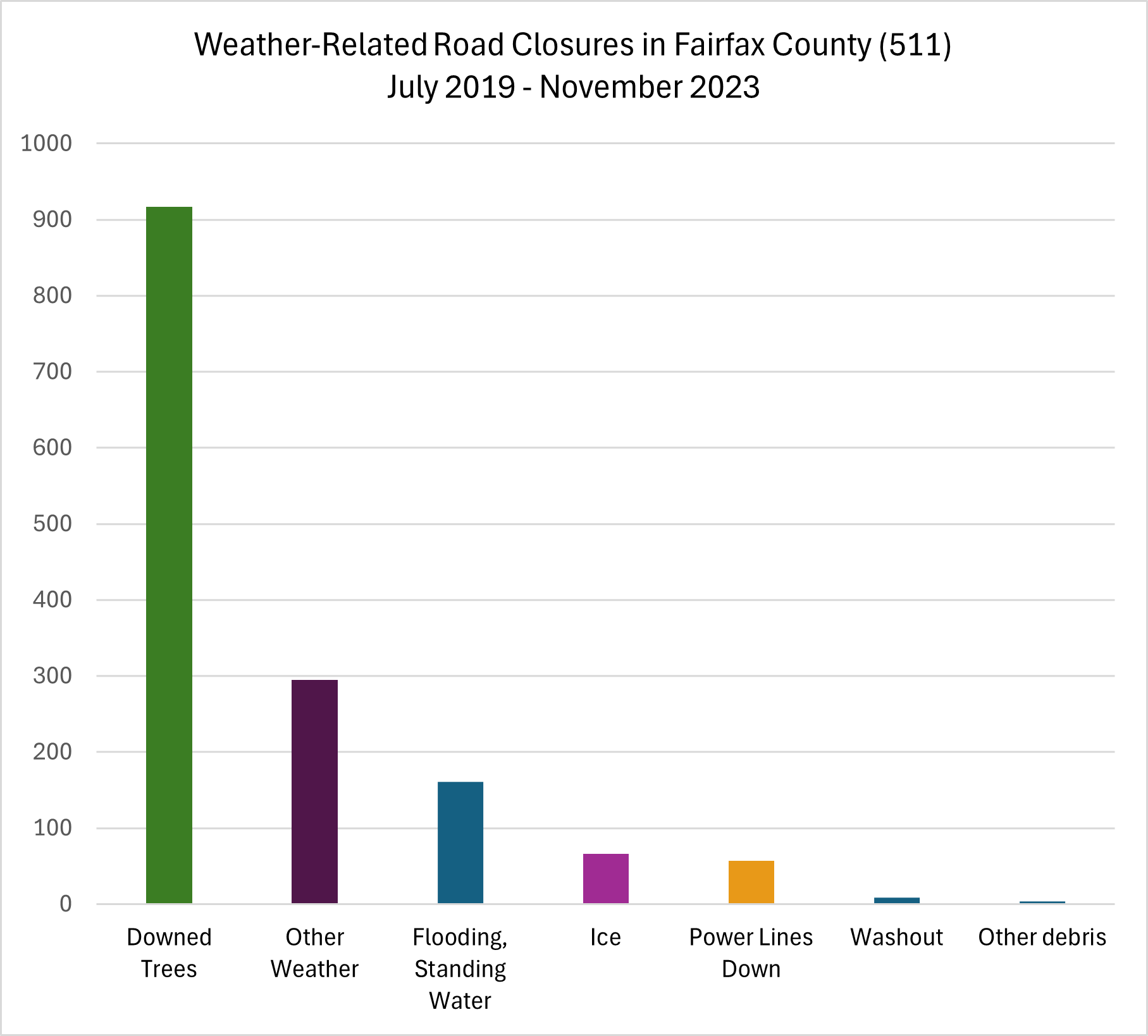


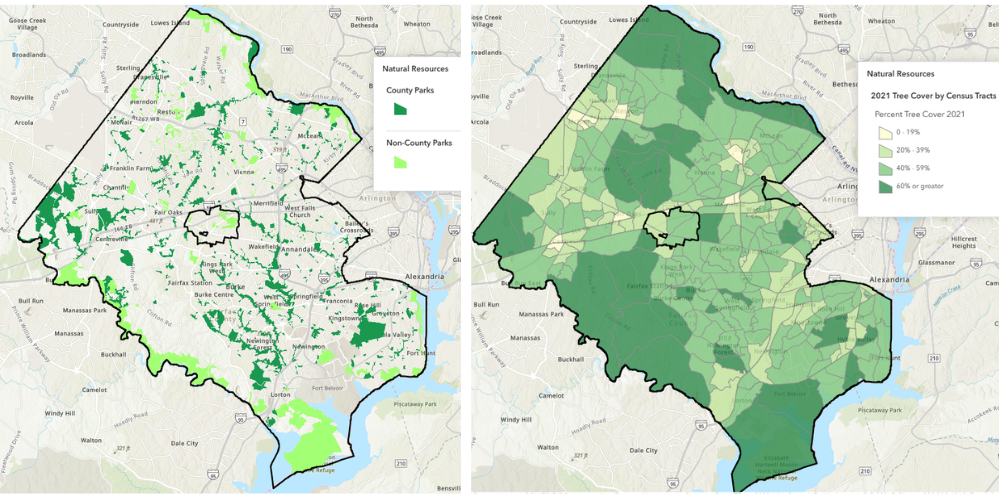
.png)





